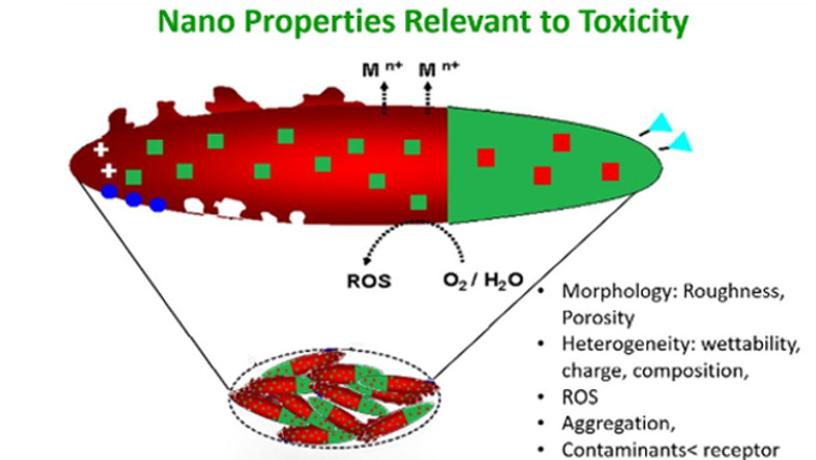Keeping Nanotech Safe for All
A team led by Ponisseril Somasundaran, LaVon Duddleson Krumb Professor of Mineral Engineering at Columbia Engineering, is collaborating with the University of California Center for Environmental Implications of Nanotechnology (UC CEIN) to understand and assess the potential environmental impact, hazard, and exposure to engineered nanomaterials (ENMs). The Center, which was established in 2008 by the National Science Foundation (NSF) and the U.S. Environmental Protection Agency (EPA), focuses on the responsible use and safe implementation of nanotechnology and uses a multidisciplinary approach that involves materials science, environmental chemistry and engineering, toxicology, ecology, social science, computer science and modeling, statistics, public health, and policy formulation. UC CEIN was recently renewed with an award of $24 million from the NSF and EPA to support its commitment to nanomaterial safety testing.

Somasundaran’s group is part of the Center’s “Fate & Transport, Exposure, and Life Cycle Assessment” theme, whose overarching goal is to address the likely range of ENMs exposure concentrations in specific aquatic and terrestrial environments. “Over the next five years, my team hopes to solve the challenging problem of developing new methods to determine actual concentrations and types of ENMs in natural settings,” he says. “Such information is the key to accurate assessment of the environmental, health, and safety risks of nanoscale materials.”
One of the questions he is looking to answer is whether there is a “nanosis lurking on the horizon like asbestosis—remember how useful asbestos was for insulation, and then along came asbestosis and silicosis?” There are currently, he points out, more than 500 consumer products that claim to contain elements of nanotechnology—these include personal care products such as shampoo, toothpaste, sunscreen, and cosmetics; fabric; food additives, pharmaceuticals such as targeted drug delivery for cancer treatment; electronics; coatings; paints; and more. ENMs can have adverse effects on the biosphere, for example, on the growth, survival, and reproduction of individual microorganisms, as well as on the growth rates and dynamics of their communities. Inhaled ENMs can even overcome the thin air–blood barrier, transmigrate into the blood, and bypass the blood–brain barrier. With the increase of ENMs in all kinds of products, there has been a rise in concern over the potential impacts on our everyday lives.
“Should we be worried?” Somasundaran asks. “Does toxicity necessarily imply a risk? And, if there are associated risks, how can we mitigate nanotechnology products to minimize these risks?”
To answer these critical questions, his team is working on developing new methods to detect nanoparticles in their actual settings and assess emerging nano-tolerance and nano-toxicology. “This is a very exciting and important task for us,” he adds, “as the results will have great impact on human and environmental health, as well as on nanomaterials science.”
The new work by Somasundaran’s lab is a natural offshoot of earlier research conducted on the effects of surface properties on the fate and transport of ENMs in the environment. The team is designing detection methods using synthetic waters first and then expanding to testing on natural samples. They are focused on understanding the specific properties that ENMs have that are different than those of their coarse counterparts. These properties, such as membrane wettability and conductivity, are, says Somasundaran, the primary basis for the development of detection and mitigation technology. “It is important to note,” he continues, “that techniques used to monitor properties of coarse or flat systems not only do not work for nanoparticles but can give misleading results.” The ENMs currently under investigation are ones that are widely used and also considered by the EPA and other regulatory agencies ones to “keep an eye on.” One of the major challenges in this research is the tiny size of ENMs and their tendency to be hidden in larger aggregates—they are often embedded in complex matrices with a very diverse set of particles. Another big challenge is to evaluate the amount of ENMs that have been transformed into another phase.
“This critical study will help us use these new transformative “magic dusts” for a joyous and healthier life for generations like never before,” Somasundaran adds.
